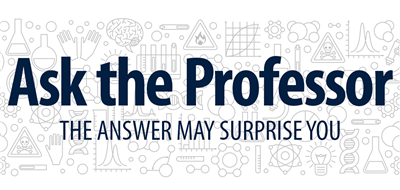
Find more answers here!
The media have reported on the sharp rise of anxiety and depression among both instructors and students associated with the switch to online instruction during the recent pandemic. These reports are also supported by the research of scholars and are confirmed for people in both higher education and education in kindergarten through twelfth grade (K-12) public schools. More recently, media and scholarly reports are documenting academic losses related to the pandemic. For example, a team of researchers from Dartmouth, Harvard, Johns Hopkins, Stanford, and the testing company NWEA data from 7,800 communities in 41 states and found that the average student was about one-half year behind in math and one-third year behind in reading by the spring of 2022, compared to pre-pandemic years.
One possible explanation for these academic losses might be the quality of teaching. The switch to online instruction was abrupt. Much of the anxiety related to this switch was related to both students and instructors feeling that they were not adequately prepared for the switch. In the last few months, a few new studies have examined what happened to the quality of teaching during the pandemic. These studies are based on data from both students and instructors in K-12 and university settings.
Of course, the quality of teaching is a complicated topic, but these new studies give us some hints about how it changed. So, what happened? Well, there’s good news and bad news and very bad news.
First, some good news.
During the pandemic, both K-12 teachers and university instructors found more ways to share content with their students than they had been using before the switch to online instruction. Both students and instructors confirmed this change. The improvement was small, but given the challenges of the switch to online instruction, instructors should be heralded for this accomplishment. Bravo! Decades of research have shown that when instructors use a variety of approaches to share content with students, rather than sticking to lecture and reading, students learn more, and instruction is more accessible to a more diverse student population in terms of race, language differences, disabilities, culture, etc.
Now for some bad news.
Instructors did not do as well during the pandemic when it came to giving students a variety of ways to demonstrate what they know and what they have learned. Again, the change was small. Instructors may have found it challenging to find ways to assess students outside of traditional exams and papers while also learning and adjusting to online technology and resources. Again, decades of research have shown that when instructors give students a variety of approaches to show what they have learned, students are more successful academically, and those activities are more accessible to a more diverse student population.
Now for the very bad news.
Students and instructors across levels of education confirm that the students were far less engaged in academic work during the pandemic than before. Perhaps this does not seem surprising, given that the instruction was online. However, this drop in engagement was enormous. Instruction that is more engaging leads to better academic outcomes and is more inclusive of diverse students.
What can we do?
Given that online instruction is on the rise in general and that future disruptions to classroom instruction are inevitable, it might be a good idea to prepare instructors and students for these eventualities. The studies described here show that student engagement dropped precipitously with the switch to online instruction, so providing instructors with tools and guidance to enhance engagement should be an important part of this preparation. At the university level, that is tricky for at least two reasons. One, university faculty are typically responsible for more than teaching, with a variety of scholarly, creative and service responsibilities. Two, universities do not provide the extensive teaching training that is required of licensed K-12 teachers. At the K-12 level, state legislatures specify requirements for various teaching licenses. These requirements typically include college-level coursework, such as courses in teaching methods and assessment. The coursework typically does not include courses in student engagement. Of course, this topic is likely included to some extent in other required courses but is not typically listed as a separate requirement for a teaching license. Perhaps this should change.
Warning:
Although the results so far are quite consistent across studies, there are only a small number of published studies that have addressed this topic so far. Still, these results are suggestive.
About the professor.
Robert Ives received his Ph.D. in special education from the University of Georgia and joined the University of Nevada, Reno, in 2002. He teaches classes in assessment, research and disabilities in mathematics. He was awarded a Fulbright Fellowship in 2008 and is cofounder and codirector of the Research in Romania program. During the pandemic, he was recognized with the Judith S. Bible Teaching Excellence in Education Award in 2020 and the Donald Tibbitts Distinguished Teacher Award in 2021.














